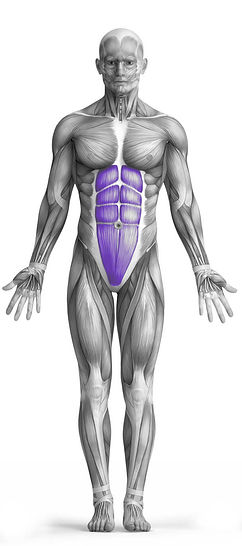Dead Bug 101 Video Tutorial
0

Exercise Synopsis
Target Muscle Group
Abs
Secondary Targets
Execution
Compound
Force Type
Isometric
Required Equipment
Bodyweight
Fitness Level
Intermediate
Variations
None
Alternatives
None
Timer
Hour
Minute
Second
Stopwatch
00:00:00:00
Overview
The Dead Bug is a bodyweight exercise primarily targeting the abdominal muscles with secondary emphasis on the hip abductors. This exercise is performed without the need for any equipment. To execute the Dead Bug, lie on your back with arms extended toward the ceiling and legs lifted, knees bent at a 90-degree angle. Lower one arm behind your head while simultaneously extending the opposite leg straight, hovering above the ground. Alternate sides in a controlled manner, engaging your core to stabilize the spine throughout the movement. The Dead Bug is effective in enhancing core strength, stability, and coordination while minimizing strain on the lower back.
How to Perform
Begin by lying on your back in a supine position, ensuring a 90-degree bend at the hips and knees, forming a 90/90 position.
Extend one arm and the opposite leg simultaneously while exhaling, maintaining control throughout the movement.
Return to the starting position and perform the same movement on the opposite side.
Continue to alternate sides, executing the exercise with a focus on controlled and deliberate movements.
Repeat the sequence for the desired number of total repetitions, engaging your abs and hip abductors to enhance core strength and stability.
★ Bonus: For exercises that involve external weights (such as dumbbells, barbells, or machines), the One Rep Max (1RM) calculator can help you estimate your maximum lifting capacity. Use it to track your strength progress and adjust your training for optimal results.
Tips
Focus on maintaining a steady and controlled breath throughout the exercise, avoiding the tendency to hold your breath for stability. Develop the ability to move while preserving proper body position without relying on breath-holding.
Prioritize controlled movements over speed, emphasizing precision within your range of motion. The objective is not just completing repetitions but executing each movement with deliberate control.
Pay attention to your breathing pattern, exhaling as the arm moves overhead and the leg extends. This aids in keeping the ribs down and preventing excessive hyperextension of the lower back.
If maintaining a neutral spine becomes challenging when moving both the arm and leg simultaneously, consider starting with isolated movements for either the arms or legs. Gradually incorporate additional elements only after mastering control over individual components.
How Not to Perform
Avoid holding your breath during the Dead Bug exercise, as relying on respiration to compensate for stability can hinder proper muscle engagement. Focus on maintaining consistent and controlled breathing throughout the movement.
Steer clear of quick and uncontrolled movements. Instead, prioritize slow and deliberate motions to enhance control and stability. The goal is precision within your range of motion, not rushed repetitions.
Do not neglect your breathing pattern. Exhale purposefully as you extend the opposite arm and leg, aiming to keep the ribs down and prevent excessive arching of the lower back.
If you struggle to maintain a neutral spine while moving both the arm and leg simultaneously, refrain from attempting the full movement initially. Begin by isolating either the arms or legs and gradually progress to combined movements once you've established control over individual components. This ensures proper form and reduces the risk of injuries.
Variations
Variations of fitness exercises refer to different ways of performing a specific exercise or movement to target various muscle groups, intensities, or goals. These variations aim to challenge the body differently, prevent plateaus, and cater to individuals with varying fitness levels.
Alternatives
Alternative exercises in fitness refer to different movements or activities that target similar muscle groups or serve the same training purpose as the primary exercise. These alternative exercises can be used as substitutes when the original exercise is unavailable or challenging to perform due to various reasons such as equipment limitations, injuries, or personal preferences.








